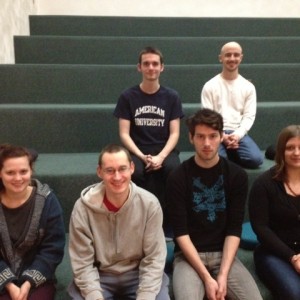The doctrine of no-self in Buddhism is one of the most important teachings for anyone who is interested in Buddhism to understand. However, no-self is also one of the most misinterpreted doctrines.
What exactly is no-self? To answer this we need to establish a working definition of “self.” In Buddhism there are five clinging aggregates, which are the common attributes we erroneously comprehend as ourselves: form, feelings, perceptions, volition formations (mental

ntentions) and consciousness. Using the example of an automobile, no one part is the whole car, but all the parts combined will make the appearance of a car. Similarly, no one aggregate is a being, but a combination of all the aggregates composes a being.
All of these aggregates are impermanent. The body is aging and decaying, feelings are changing constantly, perceptions are always being reshaped, intentions are also ever-changing and consciousness changes in such rapid succession that Buddhist commentaries use a unit of time called “mind-moments.” As a result of all these aggregates being impermanent, they will eventually cause suffering. For example, our physical bodies will wear down to the point where mundane tasks will become
difficult. In Buddhism, if an object is impermanent and a source of stress, then it cannot be “self.” In order for something to be called a self, it needs to be unchanging and eternal. As a result of being unchanging, it cannot be an object that causes suffering and can therefore be called a self. In Buddhism, no such objects or entities exist.
But what if someone punches me and there is no-self? What did that person punch?
Buddhism does not deny the existence of a “conventional” self. Conventional terms such as tree, squirrel, man, woman and Buddha are all used for communication and understanding.
Interestingly, Buddha did say in the Majjhima Nikaya, “All things, conditioned or unconditioned, are anatta, are void of self and soul.” As a result, Buddhists do not believe in a static, permanent, independently existing entity or object called “self.”
How can the concept of no-self help us in everyday life? In “Everyday Zen” by Charlotte Joko Beck, who describes going out on a lake in a rowboat on a foggy day, all is peaceful until another rowboat hits hers. She becomes irritated, and a bunch of negative thoughts arise, but then she realizes that no one is in the other boat, and her anger vanishes. It was just an unmoored boat, so there is nothing to be angry at.
Similarly, say your neighbors in your residence hall are partying at midnight while you are
trying to sleep. Of course, you get a bit angry, but who are you really angry at? In reality, you are angry at people that are dynamic, not static. The same can be applied to professors who give a lot of work, pesky family members and even toward our own imperfections. Taking time to reflect on this concept of no-self can reduce stress because we find that we are stressing about someone or something that only appears constant but is really ever-changing.
To quote the Tibetan teacher, Anan Thubten: “No self, no problem.”
Kevin walker is a junior social studies major and president of the IC Buddhist Community. Email him at [email protected].








